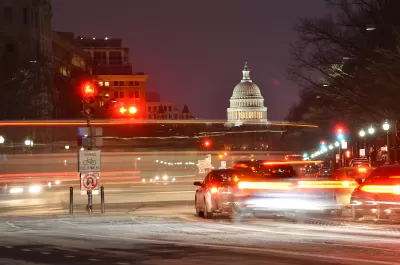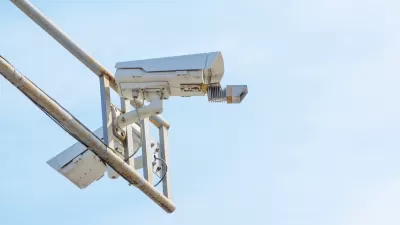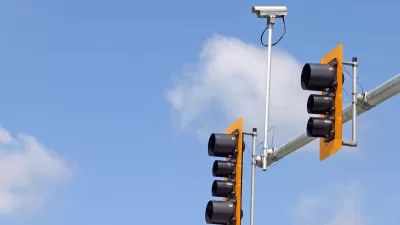More widespread deployment of automated enforcement sensors could change the system from one of high fines and sparse enforcement to one that encourages more extensive behavior change.

In an opinion piece in Greater Greater Washington, John Leibovitz calls on the District of Columbia to double down on its automated traffic enforcement program. Despite common concerns about privacy and equity, Leibovitz argues that boosting automated traffic enforcement (ATE) is “an essential tool” for reducing roadway fatalities and ensuring compliance with speed limits and other road rules.
The district already plans to triple the number of cameras it installed during a recent pilot program, but Leibovitz says many more are needed to ensure widespread compliance. With less than one percent of the district’s streets covered by ATE, this won’t have an impact on ‘global’ driving behavior. The sparse placement of cameras also brings up questions about equity, which areas get protection, and which drivers get ticketed. “It is important to note that both questions are intimately related to the first limitation–the scarcity of cameras–which inherently drives both a logic of high fines and raises hard choices about where to deploy them.”
Leibovitz advocates for a “safety zone” model of deployment that uses abundant sensors to replace a system of high fines and irregular enforcement with “a paradigm of widespread compliance with much smaller fines designed to ‘nudge’ drivers to safer behaviors on a more continuous basis.” An enhanced ATE program would also give cities more data, create a more immediate driver feedback loop, and could inform more tailored enforcement strategies.
FULL STORY: It’s time to “think different” about automated traffic enforcement

Alabama: Trump Terminates Settlements for Black Communities Harmed By Raw Sewage
Trump deemed the landmark civil rights agreement “illegal DEI and environmental justice policy.”

Planetizen Federal Action Tracker
A weekly monitor of how Trump’s orders and actions are impacting planners and planning in America.

The 120 Year Old Tiny Home Villages That Sheltered San Francisco’s Earthquake Refugees
More than a century ago, San Francisco mobilized to house thousands of residents displaced by the 1906 earthquake. Could their strategy offer a model for the present?

In Both Crashes and Crime, Public Transportation is Far Safer than Driving
Contrary to popular assumptions, public transportation has far lower crash and crime rates than automobile travel. For safer communities, improve and encourage transit travel.

Report: Zoning Reforms Should Complement Nashville’s Ambitious Transit Plan
Without reform, restrictive zoning codes will limit the impact of the city’s planned transit expansion and could exclude some of the residents who depend on transit the most.

Judge Orders Release of Frozen IRA, IIJA Funding
The decision is a victory for environmental groups who charged that freezing funds for critical infrastructure and disaster response programs caused “real and irreparable harm” to communities.
Urban Design for Planners 1: Software Tools
This six-course series explores essential urban design concepts using open source software and equips planners with the tools they need to participate fully in the urban design process.
Planning for Universal Design
Learn the tools for implementing Universal Design in planning regulations.
Clanton & Associates, Inc.
Jessamine County Fiscal Court
Institute for Housing and Urban Development Studies (IHS)
City of Grandview
Harvard GSD Executive Education
Toledo-Lucas County Plan Commissions
Salt Lake City
NYU Wagner Graduate School of Public Service





























